Japanese Ginger Info: How To Grow Myoga Ginger Plants
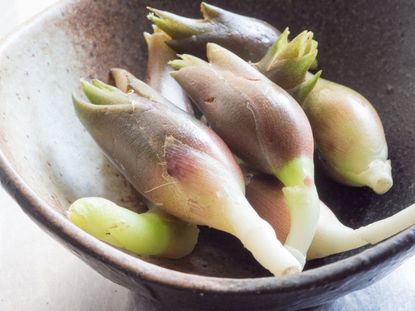

Japanese ginger (Zingiber mioga) is in the same genus as ginger but, unlike true ginger, its roots are not edible. The shoots and buds of this plant, also known as myoga ginger, are edible and can be used like an herb in cooking. Japanese ginger uses aren’t limited to food, though; this pretty perennial can also add visual interest to the garden.
What is Japanese Ginger?
Japanese ginger, which is also called myoga ginger or just myoga, is a perennial, herb-like plant native to Japan and the Korean peninsula. It has not been common in the U.S. but is now easier to find in nurseries. You can grow myoga outdoors in partially shady beds or in containers – indoors or outdoors. They will grow to about 18 inches tall (46 cm.) but may grow twice as tall if you use fertilizer. The buds and young shoots are harvested for eating.
How to Grow Myoga Japanese Ginger
Myoga is hardy to zones 7 to 10, but it is also well suited to growing in containers that can be moved indoors to avoid freezing. Use rich soil that drains well, but that will stay moist, and choose a location that is at least in partial shade throughout the day. You can fertilize myoga to get it to grow taller, but frequent fertilization is not necessary. If you will not be harvesting the buds of your myoga, you can expect to get pretty, blooming flowers in the summer.
Japanese Ginger Info for Cooking
This ingredient is much more common in the plant’s homeland of Japan, so to get it in other places you may need to grow myoga in your garden or in a container. Although this isn’t a true ginger, the flavor of the flower buds is reminiscent of ginger root but also tastes a little bit like onion. A common use for it is in thin slices to garnish savory dishes and add subtle flavor. Use it to top salads, noodle dishes, and any other dish you would use green onion slices to garnish or flavor. Growing myoga ginger is a great choice whether you want to enjoy the tasty buds or not. In a warm, shady garden, these plants add interesting foliage and height as well as late summer flowers.
Gardening tips, videos, info and more delivered right to your inbox!
Sign up for the Gardening Know How newsletter today and receive a free download of our most popular eBook "How to Grow Delicious Tomatoes."

Mary Ellen Ellis has been gardening for over 20 years. With degrees in Chemistry and Biology, Mary Ellen's specialties are flowers, native plants, and herbs.
-
 Clever Vertical Vegetable Garden Ideas For Small Spaces – 7 Ways To Save Space
Clever Vertical Vegetable Garden Ideas For Small Spaces – 7 Ways To Save SpaceShort on garden space? Learn some vegetable garden ideas for small spaces that are fun and easy.
By Mary Ellen Ellis
-
 26 Different Types Of Orchids – With Pictures & Information
26 Different Types Of Orchids – With Pictures & InformationDiscover stunning orchid types to grow in your home and garden – from easy beginner varieties to rare and exotic species that are the preserve of experts.
By Melanie Griffiths
-
 Homemade Ginger Ale Straight From The Garden
Homemade Ginger Ale Straight From The GardenLearn here how to grow your own ginger and check out a recipe for homemade ginger ale.
By Bonnie L. Grant
-
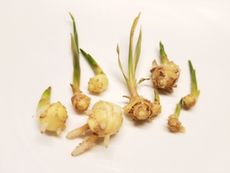 Can I Plant Grocery Store Ginger - How To Grow Grocery Store Ginger
Can I Plant Grocery Store Ginger - How To Grow Grocery Store GingerGinger has a lengthy history and was once bought and sold as a luxury item. But perhaps you have wondered, “Can I plant grocery store ginger?”. Read on to find out.
By Amy Grant
-
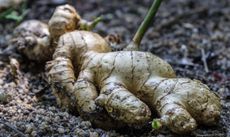 Ginger Harvesting Guide – Learn How To Harvest Ginger Plants
Ginger Harvesting Guide – Learn How To Harvest Ginger PlantsPeople have been harvesting ginger root for its aromatic, spicy rhizomes for centuries. Given that these delectable roots are underground, how do you know if its ginger harvesting time? Click here to find out when to pick and how to harvest ginger.
By Amy Grant
-
 Diseases Of Ginger – Recognizing Ginger Disease Symptoms
Diseases Of Ginger – Recognizing Ginger Disease SymptomsGinger can be an interesting addition to your edible landscaping. Careful planning and a watchful eye will ensure that you never have to experience any of the ginger plant diseases found in this article. Click here for more information on treating sick ginger plants.
By Kristi Waterworth
-
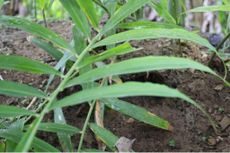 Ginger With Brown Leaves: Learn Why Ginger Leaves Are Turning Brown
Ginger With Brown Leaves: Learn Why Ginger Leaves Are Turning BrownGinger plants are interesting additions to gardens, but they can be fickle about growing conditions. Brown leaves can be an alarming symptom, but the chances are good that your plant is showing a sign of stress, rather than a sign of sickness. Learn more here.
By Kristi Waterworth
-
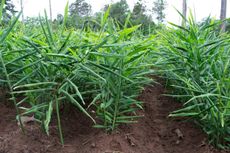 Can Ginger Grow Outside – Ginger Cold Hardiness And Site Requirements
Can Ginger Grow Outside – Ginger Cold Hardiness And Site RequirementsOnce an exotic herb is grown only in tropical locations, today homeowners all over the world can grow their own ginger in the garden. Click the following article to learn more about growing ginger outdoors along with their outdoor requirements.
By Darcy Larum
-
 Hydroponic Ginger Plants – Can You Grow Ginger In Water
Hydroponic Ginger Plants – Can You Grow Ginger In WaterTo grow ginger, these conditions need to mimic those where it grows naturally, but what about hydroponic ginger plants? Can you grow ginger in water? Click on this article to find out about rooting and growing ginger in water.
By Amy Grant
-
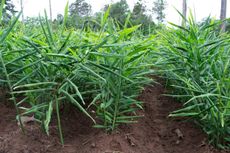 Ginger Plant Division : How To Divide Ginger Plants
Ginger Plant Division : How To Divide Ginger PlantsSeparating a ginger periodically will encourage new growth and can garner new plants from divided rhizomes. The trick is knowing when to divide ginger and how to do it without damaging the parent plant. This article will help with that.
By Bonnie L. Grant